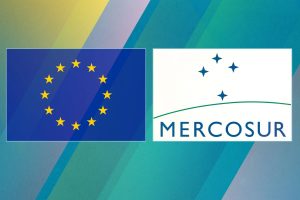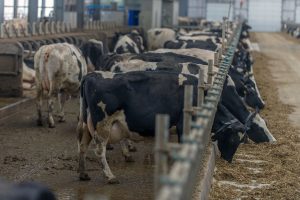
After this political agreement, it is now up to the negotiation teams to finalize the legal scrubbing, but the key elements are set. Now, the European Parliament and the EU member states (European Council) are called to decide whether to approve the deal.
As both executives stated: the world has changed since the process started back in 2017.
The rather unequal partners – 447 million EU citizens with a GDP of 17 trillion euros vs 5 million New Zealanders with a GDP of 200 billion euros – have concluded an extremely favourable deal for the small island country in the Pacific Ocean, 20.000 km away from Europe.
With regards to milk & dairy, the two partners are also very different: 85% of the New Zealand’s milk (with 25,25 million tons per year and an average dairy herd size of 450 cows) are processed by one single dairy, while the European dairy sector (with 159 million tons per year and an average dairy herd size of 21 cows) is rather characterized by small size, regional dairies.
Today’s trade agreement increases the pressure on our European dairy sector within the EU Single Market in a time when the EU ‘lactosphère’, farmers and their dairies are investing heavily into their environmental sustainability strategies.
The now conceded market access for butter of a minimum of 15.000 tons is to be added to the already existing New Zealand quota of more than 74.693 tons – which equals about 4% of the annual European butter production.
For cheese, we have a similar picture – the new market access volume of a minimum of 20.000 has to be added to the already existing 11.000 tons. For certain cheese categories like processed cheeses and blue cheeses, the European Commission even offers a full liberalization within seven years.
A joint quota for milk powder (skimmed milk powder and whole milk powder) of 13.500 tons has been offered to New Zealand – milk powder that can be imported into European intervention stocks whenever markets turn sour.
With around 3.500 tons of whey protein concentrate market access for New Zealand, this highly specialized ingredient sector will have to cope with New Zealand import quantities of more than a significant market share.
What’s in for EU dairy?
The negotiating partners have not yet released a full version of the trade deal and we have so far no view on any New Zealand dairy concessions – which will in any case not compensate due to the very limited New Zealand home market.
What we expect now from the European Commission is to assure that at least the management of the import tariff rate quotas (TRQs) will be established in a way that doesn’t further play to the advantage of NZ dairy.
In a first reaction, EDA President Giuseppe Ambrosi stated:
“We fully understand that the European trade policy is of high strategic importance in the new geopolitical environment. Any trade agreement must be tailored in a fair trade and level playing field spirit to achieve at the end a win-win situation. For milk and dairy, this was a near to impossible task from the outset and the outcome does give a unilateral advantage to the NZ dairy industry, pushing the EU concessions to the absolute limit. The EU dairy sector will do its utmost to continue being resilient and competitive, and we will now have to prepare for the new tougher market conditions.”

























